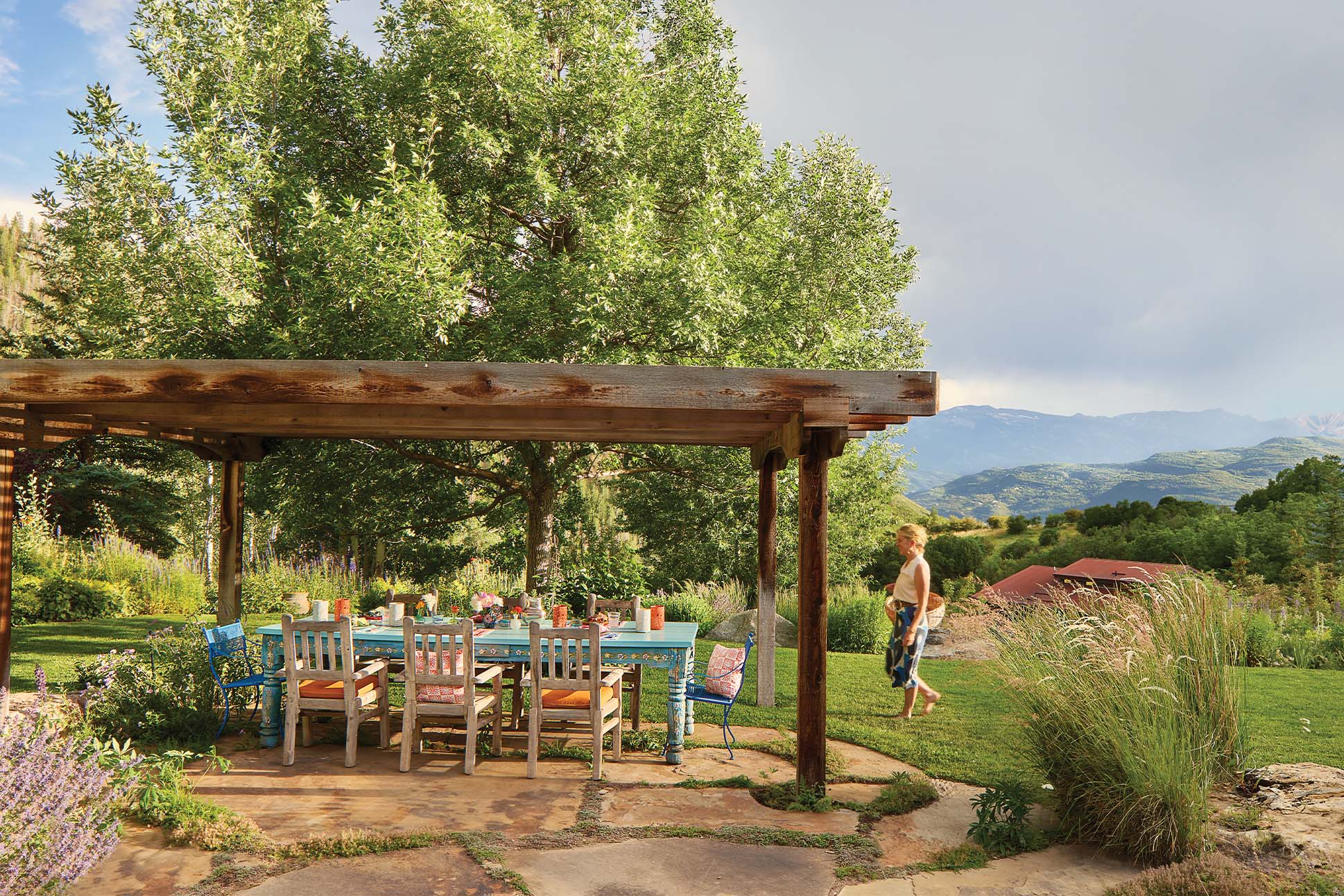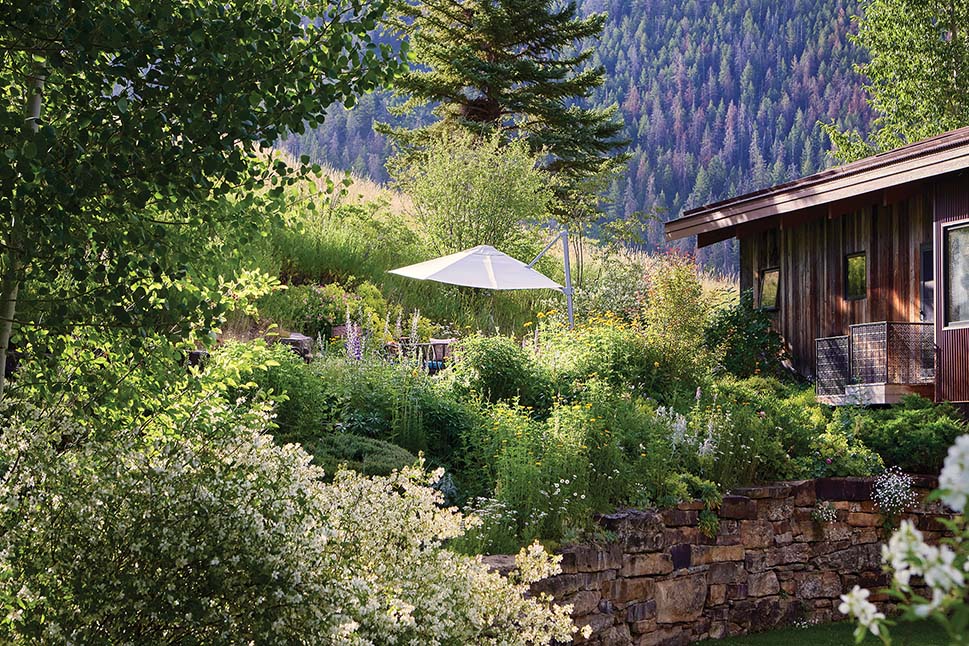Text by Anna Harmon
Images by Susie Brenner, Trevor Triano, and courtesy of Isa Catto Studio
Isa Catto has thought many times about the color of snow. “It’s gray and blue and reflects everything about it,” the artist says from her home in Woody Creek. Nearby, her dog awaits a long walk in the neighboring national forest. Woody Creek sits at 8,000 feet elevation in a box canyon. Its growing season is short, but the canyon’s microclimate has enabled her to establish a flourishing, if fleeting, garden she named Mojo Gardens. Here, native pollinator plants grow alongside cut flowers and vegetables in the warmer months, and wild elk freely roam the apple orchard in the fall to feast on frostbitten fruit.
“Even though this is a tough environment, to me it’s very nurturing,” Catto says. “I love growing things.” From her home, she has also cultivated a rich artistic practice and raised a family. Her on-site studio, which was designed by her friend and fellow artist Brad Reed Nelson, houses a workspace upstairs and a showroom downstairs. Since 2020 the space has also served as a storefront for her line of products, including paper goods and textiles, a medium that has long held Catto’s interest and one she has embraced as a way to make her art more accessible.
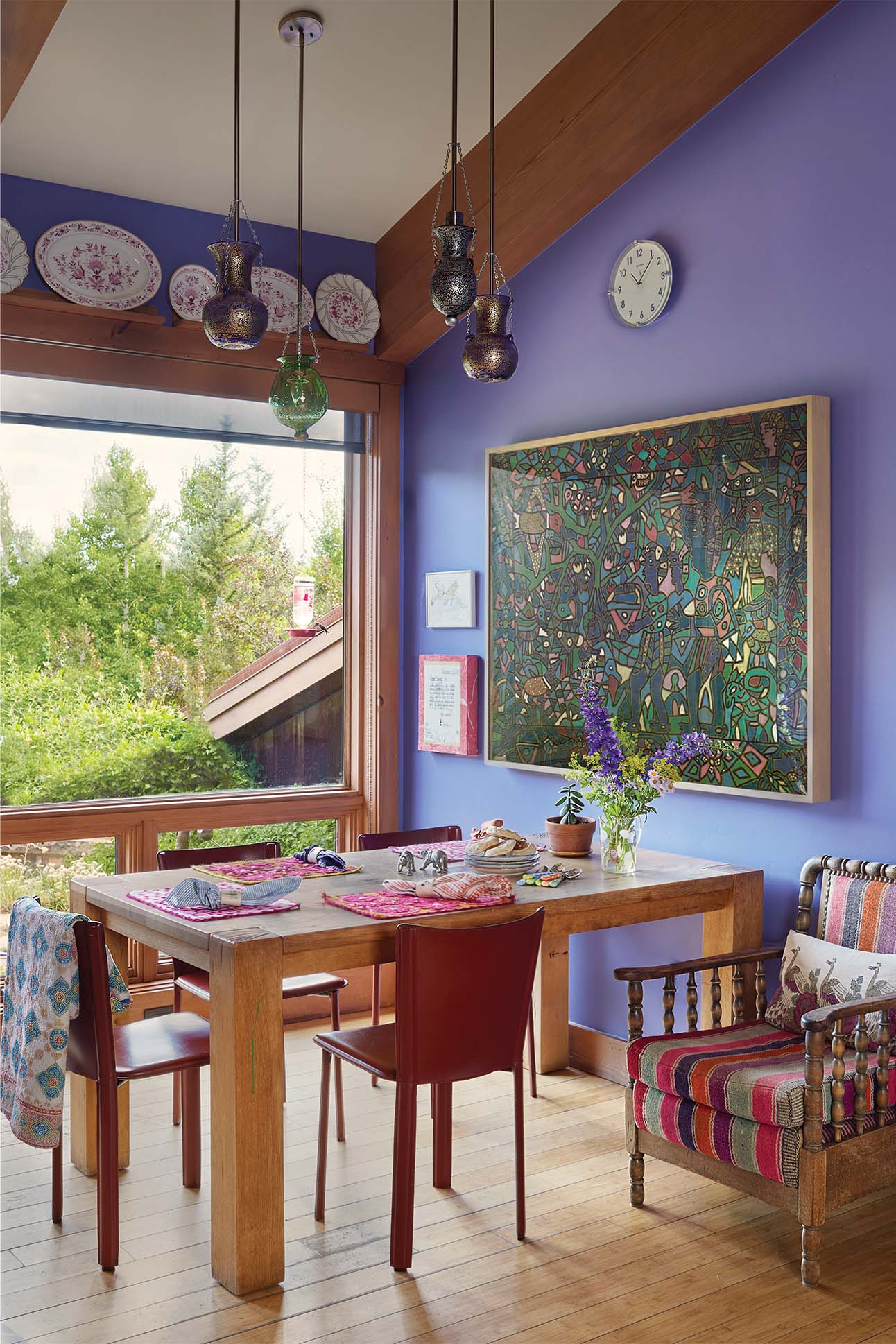
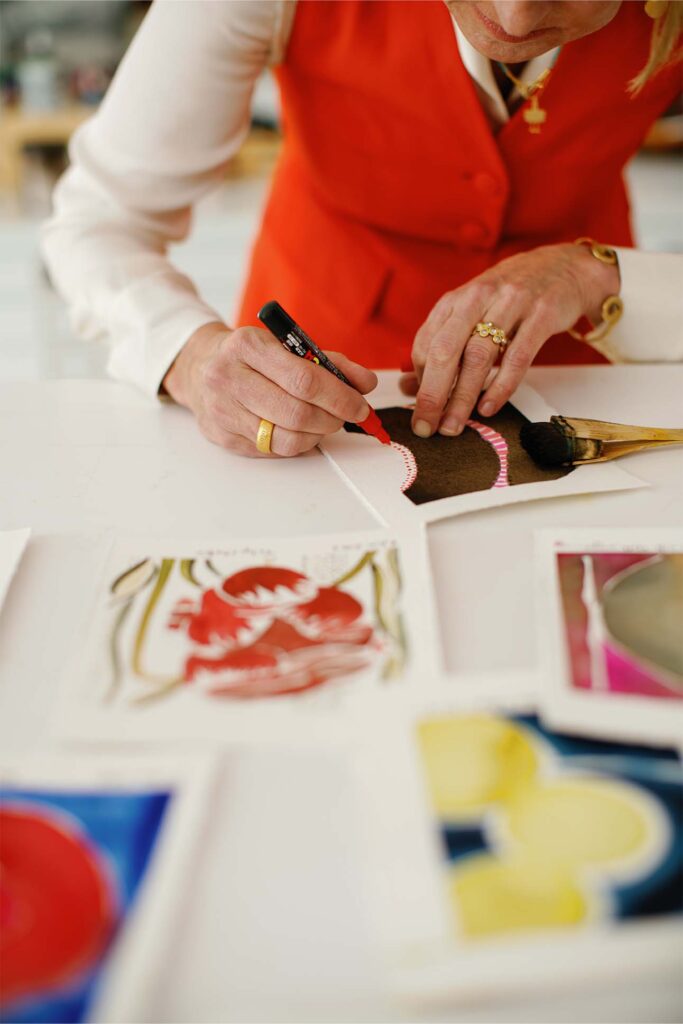
Catto primarily works in mixed media and watercolor, the latter of which serves her particularly well in Colorado, where there is a crisp clarity to the quality of the light. “In the East Coast or places with humidity, literally the light is more saturated,” she says. “We don’t have the humidity, so there’s a clarity that all the artists loved—Georgia O’Keefe being an incredible example.”
Her inspiration often comes from literature and the world around her, ranging from flowers spotted on walks to faces she encounters at the doctor’s office. She keeps a copious journal, a habit she formed early in life, and draws heavily upon the natural environment. During hikes in the area, she says, “I like to stop and take a quick sketch of a flower. Sometimes I take notes of colors—I’ll come along a flower and say, ‘Oh that’s a little bit of vermilion with alizarin crimson,’ so I can recreate it later.”


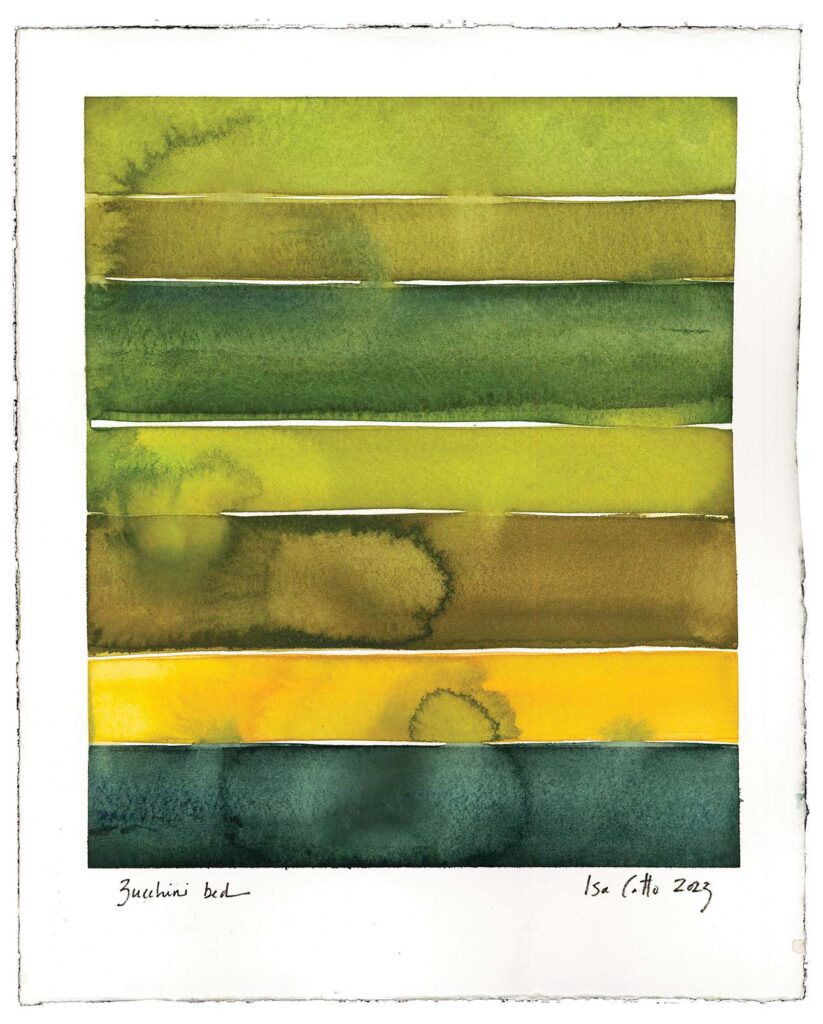
One such observation that resulted in a series of watercolor paintings was the flight patterns of local birds. An early riser, Catto found herself watching barn swallows in flight and started to sketch. In the process, she realized the incredible consistency of the shapes they were carving in the air. She began to research the aerodynamics and physics of bird flight. “A turkey vulture has an incredible economy—they use all the inner air currents,” she says. “All these things we take for granted.”
Her curiosity is also fed by entertaining others, such as the visiting writers she and her husband, documentarian and journalist Daniel Shaw, have hosted at their 17-acre property as part of an annual residency program in collaboration with Aspen Words. She purchased the property in 1994 but the couple didn’t make the move there from Manhattan until 2004 following the birth of their first child. A self-declared introvert, Catto realized Colorado gave her the space she needed to create.
But Colorado was already a home of sorts for Catto even before she permanently settled in the area. Her mother, Jessica, grew up visiting Estes Park in the summer to escape the Texas heat and fell in love with the Rocky Mountains. As an adult, Jessica continued to frequent Colorado, staying in a friend’s cabin at Paepcke Park in Aspen. Catto’s father, Henry, was in the foreign service, so the family lived in several places over the course of her childhood, but they consistently returned to Colorado. Aspen was her mother’s intellectual ballast, Catto says, with its Socratic seminars at the Aspen Institute and vast landscape of other cultural outlets.
Jessica would haul the family out to the dirt roads of Aspen in the summertime to explore the outdoors and march them up hills for picnics and music playing. All the kids grew up to be conservationists. “My mother was an avid wildflower stalker, so she always had the guidebooks,” Catto remembers. Descendants of Jessica’s seed collection now grow at Mojo Gardens.
In 2023, Catto set out to become even more familiar with the high Rockies by painting daily studies of its colors. The practice yielded an abundance of new combinations: the crisp orange of willow bark against anchor ice in the pond; the electric yellow of daffodils flattened by snow; the rich flashes of a western bluebird alongside the evergreen of a spruce tree; the near-phosphorescent hues of a bed of pink and red peony tulips—a palette she had never seen before.
As the days warm into summer, Catto is adventuring beyond her comfort zone by painting in black and white. At Mojo Gardens, she plans to build upon the concepts of pollinator corridors and living walls to create a Western take on the English hedgerow. Here, wooden arches stand at transitional points between the domesticated garden and wilder beyond, creating portals through which to wander and look—just as Catto continues to invite those to look once more, look a little more closely, look with even more care at the landscape of her heart.
Learning to Look with Isa Catto
“Learning to look, for me, is a discipline,” Catto says.
On studying color:
“The best way to learn about color is to step outside and try to match colors or look at different combinations. Why do they work? Is it light? Do you see how they vibrate next to each other?”
On starting small:
“You don’t have to go up a fourteener to see wildflowers or sketch or take photos. Just do whatever taps you into this current of beauty.”
On the surrounding wilderness:
“There’s no other place like this in the states where there were these extraordinary women who lobbied Congress to have four wilderness areas. My hope is for people to get beyond the ski slope or the Rio Grande Trail and understand how that has shaped this place.”
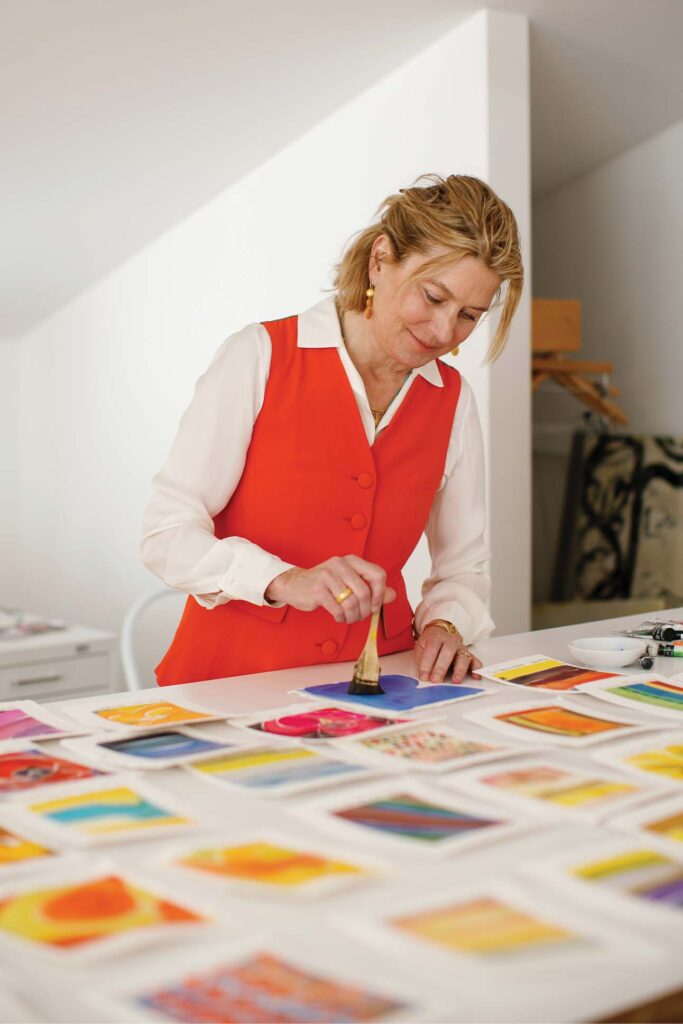
On staying curious:
“I think it’s part and parcel of being an introvert, but I’m never bored. This is a fascinating world. As long as there’s the friction of ideas and imagery and the natural world, how could you possibly be bored?”
On reading in place:
A voracious reader, Catto is also inspired by poetry and literature. Some of her recent reads include What We Sow by Jennifer Jewel, The Sixth Extinction by Elizabeth Colbert, and Robert Macfarland’s The Lost Words. She also frequents the work of environmental journalist Michael Pollan and naturalists Margaret Renkl and E. O. Wilson.



